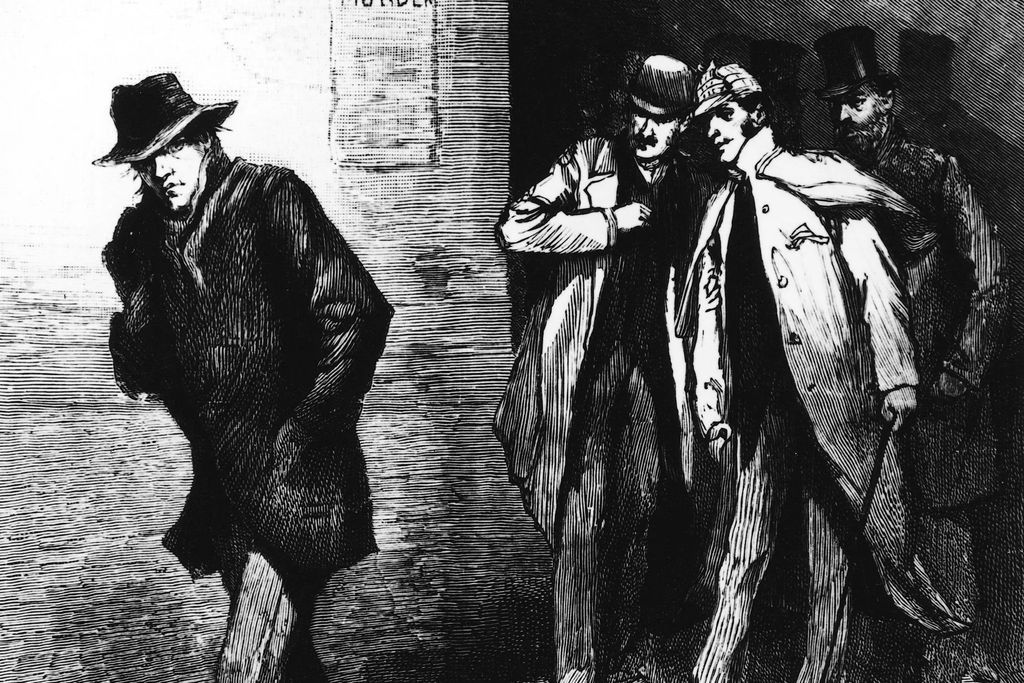
The human psyche harbors a morbid fascination with the macabre, a compelling draw to history’s darker corners where the unimaginable unfolds. Few phenomena grip our collective consciousness quite like the chilling tales of serial killers. These individuals shatter the fabric of society, leaving an indelible mark on our understanding of crime, psychology, and the very nature of evil. From Victorian London’s gaslit alleys to mid-century America’s suburbs, these figures carved out a terrifying niche, compelling us to examine the shadows they cast.
Strictly speaking, a serial killer is typically defined as someone who murders at least two people in separate events at different times. While “serial murder” isn’t formalized by legal code, these crimes are often seized upon by media and public consciousness, especially with many victims or gruesome methods. Different authorities offer varied criteria. The FBI defines a serial killer as someone who murders three or more people over a month or longer with “cooling off” periods, while the National Institute of Justice suggests at least two victims, motivated by psychological gratification and sadistic overtones. This complexity deepens the mystique surrounding these elusive figures.
It’s hard to imagine the terror for a regular person, but the infamous serial killers on this list were genuinely terrifying. Modern worries pale compared to the fear of being alone in a dark alley without remote communication when these individuals were active. Imagine living at that time; no horror movie can capture the real-life nightmares they created. In this in-depth exploration, we delve into the twisted paths of history’s most notorious serial killers, unraveling compelling facts, their methodologies, and their profound impact on criminal investigation and societal safety. Prepare for an intriguing, factual, narrative-driven journey into the shadows.

1. Jack the Ripper
“We call him ‘Jack the Ripper,’ but we don’t really know who the person behind one of the older and most notorious murder sprees was.” This anonymity fuels an enduring legend. In 1888, the killer appeared in London’s Whitechapel district, murdering five women, all sex workers. He brutally mutilated their corpses in a city gripped by poverty and fear.
The systematic nature of the attacks and specific mutilation patterns suggested considerable anatomical knowledge. Police surmised the killer might be a surgeon, a butcher, or someone skilled with a scalpel. These early observations were pioneering attempts at criminal profiling. Despite intensive investigation, these theories remained speculative, deepening the mystery and the public’s terror.
The killer audaciously engaged with authorities, mocking them by sending letters outlining his acts. This behavior highlights cases where a perpetrator’s desire for notoriety intertwines with their criminal motivation. Extensive media coverage established many narrative elements defining popular serial killer representations. The Jack the Ripper case remains one of history’s most significant unsolved murder investigations, influencing modern criminal techniques and cold case analysis despite over a century of scrutiny.
Read more about: From Pontiac’s GT-37 ‘Holy Grail’ to Hemi Convertibles: Uncovering the Rarest Muscle Car Treasures You Never Knew Existed

2. Jeffrey Dahmer
Jeffrey Dahmer commenced his horrifying spree in 1978, at just 18 years old, setting him on a path to become one of America’s most infamous serial killers. For over a decade, his heinous acts went undetected, allowing his twisted obsessions to escalate without immediate consequence. This prolonged period, until his 1991 arrest, meant many victims suffered his cruel fate.
His reign of terror ended after a would-be victim’s miraculous escape, leading police to Dahmer’s Milwaukee, Wisconsin, home. The scene was a nightmare: photos of mutilated bodies, actual human body parts, and a vat of acid used to dispose of victims were found. These gruesome details instantly seized public consciousness, revealing unimaginable depravity.
Dahmer brutally killed 17 people, predominantly young men of color, highlighting a disturbing victim selection pattern. His methods involved not only murder but also cannibalistic acts and necrophilia. Dahmer had served time for molestation previously. In 1994, a fellow inmate killed him, bringing a sudden, violent end to his life in prison. His case remains a focal point for criminal psychology studies.
Read more about: Beyond the Limelight: How 13 Stars Navigated the Unspeakable Tragedy of a Family Member’s Murder

3. Harold Shipman (Dr. Death)
Harold Shipman, chillingly dubbed “Dr. Death,” stands as one of history’s most prolific serial killers, uniquely horrific as he was a medical professional. Operating under a veneer of trust, he is believed to have killed an estimated 250 patients during his practice in Greater Manchester, England, between 1972 and 1998. This profound abuse of the doctor-patient relationship continues to shock.
Shipman systematically murdered elderly patients under his care, exploiting the immense trust placed in a physician. His modus operandi involved administering lethal doses of diamorphine, often during routine home visits, making their deaths appear natural. His medical authority provided both unfettered access to victims and a plausible explanation for their demise, shielding his heinous activities for decades.
The scope of his crimes gradually unraveled after astute individuals raised red flags. An undertaker grew suspicious of Shipman’s unusually high number of cremation certificates, especially for elderly women dying during the day. Though initial police investigations were mishandled, allowing Shipman to continue, his greed became his undoing. He tried to forge a will, naming himself beneficiary, alerting a victim’s suspicious daughter.
Shipman was convicted in 2000 on 15 counts of murder and sentenced to life imprisonment. While incarcerated, he died by suicide in 2004. His case led to profound reforms in British medical practice, including enhanced monitoring of controlled substances and stricter death certification procedures. It also significantly contributed to research on healthcare serial killing and the critical importance of institutional oversight.

4. John Wayne Gacy (The Killer Clown)
John Wayne Gacy presented himself as suburban respectability: a successful business owner, family man, and beloved community figure, even volunteering as a clown. This carefully constructed façade concealed a monstrous secret. He was a notorious serial killer who, beneath his outward charm, preyed upon at least 33 young men and teenage boys in the 1970s.
Gacy’s path began in 1972 with the murder of a 16-year-old boy, an act he chillingly called “the ultimate thrill.” Over six years, he killed more than 30 young individuals. He exploited his construction company, employing teenage boys and young men, some of whom he sexually assaulted, tortured, and murdered. Suspicion mounted in 1978, leading to the discovery of nearly 30 bodies buried in a four-foot crawl space beneath his home.
Gacy was convicted of 33 counts of murder, plus additional charges of rape and torture, after psychologists deemed him fit for trial. He spent 14 years on death row. In 1994, John Wayne Gacy was executed by lethal injection, his final defiant words—”Kiss my ass”—serving as a grim epitaph for a man who masterfully hid unspeakable evil behind a cheerful mask.
.jpg/440px-Dr._Henry_Howard_Holmes_(Herman_Webster_Mudgett).jpg)
5. H.H. Holme
Among Chicago’s crimes, few figures are as haunting as H.H. Holmes, the cunning pharmacist. Before the 1893 World’s Fair, he constructed a hotel, infamously known as a “torture castle.” He exploited the anonymity and influx of visitors, turning the opportunity into a dark canvas for his nefarious plans. His true identity, Herman Webster Mudgett, adds to the layers of deception.
Holmes meticulously outfitted his three-story hotel with chilling contraptions: gas lines to subdue guests, secret passages, trapdoors, dead-end hallways, and chutes to the basement. Soundproofed padding and torture devices were strategically placed. The gas allowed Holmes to knock out guests before the worst occurred, often on his surgical tables for horrific experiments.
After murders, he systematically disposed of bodies, burning them in the furnace. His depravity extended to profiting from victims in death, selling skeletons to medical schools and orchestrating elaborate life insurance scams. Holmes “copped to more than 30 murders,” exposed only after a fellow scammer, with whom he had a financial dispute, turned him in. Holmes was hanged in 1896, ending his reign of terror and leaving a disturbing mark on criminal lore.
Read more about: Ever Wonder Which Dark Side Your Zodiac Sign Might Be Hiding? We’ve Got the Twisted Truth!

6. Pedro Lopez (Monster of the Andes)
Pedro Alonso López, chillingly known as the “Monster of the Andes,” presents a complex case in international criminal justice. He is linked to an astonishing “more than 300 murders” across Colombia, Ecuador, and Peru, making him potentially one of the world’s most prolific serial killers. The vast geographic spread highlighted immense challenges for inter-jurisdictional law enforcement.
López’s victims were predominantly young women and children from marginalized communities. At least one-third of his confirmed murders involved tribal women. Following his 1980 arrest in Ecuador, authorities made a grim discovery, uncovering the graves of “more than 50 of his preteen victims.” This was a shocking testament to the scale of his atrocities and the exploitation of vulnerable populations.
Despite the horrific confessions, López’s case exposed significant differences in legal frameworks. He was convicted of 110 murders in Ecuador and confessed to 240 more. However, under Ecuador’s legal system, he “didn’t even spend 20 years in prison.” Pedro Lopez was “released in 1998 for good behavior.” His whereabouts remain unknown, a chilling thought that he could still be among us.
7. Ted Bundy
Theodore Robert Bundy, with his handsome looks, charisma, and articulate demeanor, became one of criminology’s most studied serial killers. He possessed an uncanny ability to charm and manipulate. Bundy “loved the attention his murders garnered him, and many in the United States were more than happy to give him that attention,” a chilling testament to his profound narcissism and the public’s morbid curiosity.
Throughout the 1970s, the western U.S. was his hunting ground, with an unknown number of murders, primarily targeting college-age women from Washington and Oregon to Utah and Colorado. He employed various deceptive tactics: feigning injury, impersonating authority, or exploiting social helpfulness. This sophisticated manipulation distinguished his methodology, making him incredibly dangerous.
Bundy’s cunning extended to evading justice. He was arrested in Colorado and convicted of kidnapping but managed to escape custody. This audacious escape allowed him to flee to Florida, where he continued his spree, assaulting and killing six more women. His ability to elude capture, even when in the system, underscored law enforcement’s challenges with mobile, highly deceptive offenders.
Bundy’s final arrest in Florida captivated the nation. He famously “acted as his own lawyer during what is believed to have been the first televised murder trial,” a spectacle he relished, welcoming interviews and boasting of his “fans.” After years of failed appeals, Ted Bundy was executed in an electric chair in 1989. His case profoundly influenced forensic psychology, especially studies on superficial charm and psychopathic behavior, leaving a lasting, disturbing legacy.
Continuing our chilling journey into the darkest corners of human history, we now turn our attention to eight more infamous serial killers. These individuals left indelible marks on their communities and on the developing fields of forensic psychology and criminal investigation. Their stories reveal not only the depths of human depravity but also the persistent efforts of law enforcement to adapt, innovate, and bring justice, even in the most bewildering of circumstances.
Read more about: Unmasking the Unseen: Chilling Encounters with Psychopathy in Real Life and Documented Cases

8. Tommy Lynn Sells (Coast to Coast Killer)
Tommy Lynn Sells earned the chilling moniker ‘Coast to Coast Killer’ due to his extensive reign of terror, which spanned multiple states and continued for well over a decade. Convicted for multiple homicides committed between 1985 and 1999, Sells epitomized the transient offender, posing immense challenges for inter-jurisdictional law enforcement agencies trying to connect disparate crimes. His ability to move undetected across vast distances allowed his horrifying spree to persist for far too long.
His eventual arrest in December 1999 illustrates the critical role of survivor testimony in cracking even the most complex serial killing cases. Sells broke into a residence, brutally attacking two young victims. A 13-year-old tragically sustained fatal injuries from multiple stab wounds, a horrific testament to his violence. However, a 10-year-old victim, despite severe injuries, miraculously survived the ordeal and was able to seek assistance from neighbors, providing the crucial identification that eventually led to his capture.
Following his apprehension, investigators were able to link Sells to a multitude of additional unsolved cases spread across various jurisdictions, cementing his reputation as a prolific killer. This case underscored the persistent challenges faced by law enforcement when dealing with offenders who operate across state lines, making unified tracking and evidence sharing paramount. Sells received a death sentence and was ultimately executed in 2014 at the Huntsville Unit in Texas, bringing a definitive end to his twisted path and further contributing to research on transient offenders.
9. Gary Leon Ridgway (Green River Killer)
Gary Leon Ridgway, infamously known as the ‘Green River Killer,’ orchestrated one of the most extensive serial killing sprees in the annals of United States history. Active primarily throughout the 1980s and well into the 1990s within the Seattle-Tacoma metropolitan area, Ridgway meticulously targeted vulnerable women. Many of his victims were tragically involved in sex work or struggled with substance abuse, populations that historically face heightened risks and often less immediate public or investigative attention, allowing his crimes to go unsolved for an agonizingly long period.
His chilling moniker originated from his macabre practice of disposing of his victims’ remains in or near the Green River, a significant waterway in King County, Washington. This distinctive disposal method, consistently used over many years, eventually became a signature element that allowed investigators to link multiple seemingly disparate cases to a single, unidentified perpetrator. Despite this crucial clue, the killer’s true identity remained elusive for nearly two decades, casting a long shadow of fear over the region and presenting an enduring challenge to law enforcement.
The breakthrough in the investigation came years later, following his arrest in 2001, which was largely aided by significant advances in DNA technology. Ridgway, facing overwhelming evidence, entered into a controversial plea agreement with prosecutors in 2003. In exchange for providing detailed, often disturbing, information about his crimes and assisting authorities in locating the remains of many victims, he managed to avoid capital punishment. Ultimately, Ridgway was convicted of an astonishing 49 counts of aggravated first-degree murder, receiving multiple life sentences without the possibility of parole. He has since chillingly claimed responsibility for the deaths of at least 71 individuals, making his case one of the most prolific in terms of confirmed victims and a stark reminder of the complexities inherent in tracking serial offenders who exploit society’s most marginalized.

10. Edward Theodore Gein (The Original)
Edward Theodore Gein, often simply referred to as ‘The Original,’ represents a singularly significant case study in criminal psychology, particularly concerning the intricate interplay between severe mental illness and profoundly disturbing criminal behavior. Operating in the quiet, rural landscape of Wisconsin during the 1940s and 1950s, Gein’s crimes encompassed not only homicide but also extensive grave robbing, elements that distinctly set his case apart from typical serial killer profiles and continue to fascinate and repulse in equal measure.
Gein’s deeply troubled background reveals several risk factors that are commonly, though not universally, associated with violent criminal behavior. These included a childhood marked by trauma, profound social isolation that severed him from normal human connection, and an inherently unstable family environment dominated by a fanatically religious and abusive mother. Following the deaths of his family members, Gein became increasingly isolated on the secluded family farm, a fertile ground where his elaborate and deeply disturbing fantasies, largely centered around his deceased mother, took root and festered.
The eventual investigation of Gein’s property in 1957 unveiled a scene of unimaginable horror. Authorities discovered overwhelming evidence of grave desecration, along with the chilling presence of human remains that had been meticulously fashioned into various macabre objects, blurring the lines between the living and the dead. Gein confessed to two homicides and candidly admitted to exhuming corpses from local cemeteries. His case forcefully demonstrated the complexity of distinguishing between deliberate criminal intent and the overwhelming influence of severe mental illness, as he was subsequently found mentally incompetent to stand trial. Gein was committed to a state mental health facility, where he remained until his death in 1984, leaving a profound legacy in forensic psychology research and influencing countless popular culture representations of mentally ill offenders. His story continues to prompt vital questions about the ethical treatment of individuals with severe mental illness within the criminal justice system and the enduring, often tragic, relationship between psychological trauma and violent behavior.

11. Belle Sorenson Gunness (Lady Bluebeard)
Belle Sorenson Gunness carves a unique and chilling niche within criminal history as one of the most prolific female serial killers documented in American records. Active between 1884 and 1908, Gunness methodically executed a systematic pattern of elaborate insurance fraud intertwined with multiple homicides. Her victims predominantly included spouses, unsuspecting suitors, and even family members, all targeted with a singular, ruthless motive: financial gain. Her story challenges conventional perceptions of serial killers, proving that the pursuit of wealth can be as powerful a driver as any psychological compulsion.
A Norwegian immigrant who eventually settled in Indiana, Gunness devised a particularly sinister modus operandi. She shrewdly utilized personal advertisements to attract potential victims, often promising the allure of marriage while cunningly soliciting these men to bring their entire life savings with them. This financial motivation profoundly distinguished her case from many typical serial killing patterns, which are often driven by more direct psychological gratification. Investigators meticulously determined that she had collected substantial insurance payouts following the suspicious and untimely deaths of multiple family members and associates, systematically enriching herself through a trail of calculated murder.
The grim curtain closed on Gunness’s operations in 1908 when her farmhouse was engulfed by a devastating fire. Amidst the ashes and rubble, authorities made a horrifying discovery, recovering remains initially believed to be those of Gunness herself, alongside at least eleven other individuals tragically buried on her property. However, the definitive identification of Gunness’s remains has remained a source of intense controversy among historians and criminologists to this day. Intriguing evidence has surfaced suggesting the unsettling possibility of a staged death and a cunning escape, adding another layer of mystery to the already convoluted narrative of this calculating ‘Lady Bluebeard.’

12. Richard Ramirez (The Night Stalker)
Richard Ramirez, widely known as the ‘Night Stalker,’ unleashed a terrifying wave of home invasion murders across the sprawling Los Angeles area during 1984 and 1985. His case stands as a stark and significant example of random victim selection, shattering any sense of safety within the home, and his methodical use of residential break-ins as a chilling method of criminal opportunity. The unpredictability of his attacks, spanning various demographics, created a widespread and paralyzing fear across the city.
Ramirez’s crimes were characterized by several distinctive and disturbing elements that, despite their apparent randomness, ultimately aided in linking cases across multiple jurisdictions. He demonstrated a chilling adaptability in his methods, employing a diverse array of weapons including firearms, edged weapons, and blunt instruments. Furthermore, Ramirez frequently left occult symbols, particularly pentagrams, at his crime scenes. This became a horrifying signature behavior, an intentional theatrical flourish that helped investigators connect seemingly unrelated incidents, painting a clearer, albeit terrifying, picture of a single, malevolent force at work.
The investigation into the Night Stalker’s rampage faced unique and formidable challenges precisely because of Ramirez’s random victim selection. His victims varied widely in age, ethnicity, and socioeconomic status, complicating any efforts to establish predictable patterns or anticipate future targets. Adding to the complexity was the sheer geographic spread of his crimes across vast Los Angeles County. This case underscored the paramount importance of forensic evidence, particularly advanced fingerprint analysis, in linking crimes committed by offenders who deliberately defy predictable victim selection criteria and rely on unpredictability as a weapon.
Ramirez was finally apprehended in 1985, a capture that was notably spurred by a civilian identification and an overwhelming community response, a testament to the collective determination to end his terror. He was subsequently convicted on multiple counts of murder and sentenced to death, though he remained on death row until his death from natural causes in 2013. The case significantly contributed to research on home invasion crimes and powerfully demonstrated the effectiveness of media coverage in generating critical public tips that can lead to suspect identification, even in the most sprawling and complex cases. It also vividly illustrated the profound psychological impact of random violent crime on community behavior and public safety perceptions, forever altering the sense of security for many.

13. Albert Hamilton Fish (The Brooklyn Vampire)
Albert Hamilton Fish, chillingly dubbed ‘The Brooklyn Vampire,’ presents a singularly complex and disturbing case study in criminal psychology, particularly concerning the nightmarish intersection of severe mental illness, extreme paraphilic behavior, and horrific violent crime. Active primarily during the early twentieth century, Fish was convicted of multiple homicides predominantly involving child victims, and his documented behaviors were consistent with a disturbing array of severe psychological disorders, making his story one of the most unsettling in criminal history.
Fish’s case is notably prominent within criminological literature for several distinct and utterly repulsive characteristics. His crimes involved not only the unspeakable act of murder but also extended to cannibalistic behavior, placing his case within an exceptionally rare and macabre subset of serial killing that includes post-mortem mutilation and the consumption of victims. Psychological evaluations conducted during his legal proceedings painted a grim picture, revealing extensive delusional thinking and horrifying self-harming behaviors that unequivocally suggested profound mental pathology, complicating the understanding of his motivations.
A particularly significant and horrifying aspect of Fish’s case was his audacious and cruel communication with victims’ families. This included highly detailed correspondence, chillingly describing his crimes and the suffering he inflicted. This specific behavior pattern, now recognized as “taunting communication,” represents a form of profound psychological manipulation that extends the perpetrator’s control far beyond the initial criminal act. Such communications have since become an immensely important area of study within forensic psychology, as they provide rare, albeit disturbing, insights into offender psychology and can, crucially, serve as potent evidence in criminal proceedings, helping to unravel the minds of the most disturbed.
Fish was finally arrested in 1934 and met his end via execution in 1936 following his conviction for the brutal murder of Grace Budd. His case made significant contributions to the early developments in criminal psychology and forcefully highlighted the immense challenges courts confront when attempting to determine criminal responsibility in cases involving such severe mental illness. The extensive and meticulous documentation of Fish’s psychological state has cemented his case as a pivotal reference point for research on paraphilic disorders, psychosis, and their complex, often tragic, relationship to violent criminal behavior. His story also powerfully demonstrates the enduring importance of behavioral evidence in linking crimes and accurately identifying suspects, even in the context of historical investigations.

14. Samuel Little
Samuel Little stands as one of the most prolific serial killers in American history, an unsettling distinction earned over a terrifying span from 1970 to 2005. From an early age, Little was no stranger to the law, accumulating a lengthy rap sheet that included no fewer than 26 arrests across 11 different states, with charges ranging from fraud to increasingly violent attacks. His life was a consistent pattern of criminal activity, escalating in severity over decades without consistent accountability for his most heinous acts.
In the early 1980s, Samuel Little controversially managed to beat two separate murder charges, a chilling precursor to the scale of his future atrocities. He was subsequently jailed for a relatively short two-and-a-half years for attempting to strangle two women, a sentence that clearly did not deter his escalating violence. After his release from prison, he relocated to Los Angeles, leaving a devastating trail of victims in his wake, yet he remained uncaught for his murders until a crucial arrest in 2012, allowing his horrific spree to continue largely unimpeded for many years.
Decades after his initial crimes, significant developments in DNA evidence finally allowed police to prove Little’s involvement in a staggering number of murders, unraveling a decades-long mystery. He was eventually tracked to a homeless shelter in Kentucky, a seemingly innocuous location for a man responsible for so much death. Subsequently extradited to California, Little was rightfully jailed for life, finally facing justice for a fraction of his crimes.
In a stunning turn of events in 2018, Little began to confess to a catalog of grisly murders, most of which involved women he had strangled, often targeting marginalized individuals whose deaths might have gone unnoticed. The FBI officially confirmed that he had killed at least 50 women between 1970 and 2005, and have so far meticulously linked him to 93 murders in total. Disturbingly, it is suspected that the true number of his victims may tragically exceed 200 people, painting a chilling portrait of a killer who operated with devastating efficiency for an incredibly long time, hidden in plain sight.
Read more about: 9 Mega-Stars Who Refuse to Talk About Their Families—The Shocking Reasons Why

15. Dennis Rader (The BTK Strangler / BTK Killer)
Dennis Rader presented himself as the epitome of suburban respectability: a seemingly normal husband and father of two, an active Cub Scout leader, and even a president of his church’s council. This meticulously crafted facade, however, concealed a profoundly sinister and well-hidden dark side, a chilling duality that would shock a nation and forever redefine the concept of a ‘monster next door.’ His outward appearance belied the unspeakable horrors he secretly committed, maintaining a terrifying secret life.
Rader first claimed victims in 1974, when he brutally slew a family of four, including two young children aged nine and eleven, an act of unimaginable cruelty. He would go on to murder 10 people in total, meticulously binding, torturing, and killing his victims. After his initial crimes, he audaciously wrote anonymous letters to TV stations, brazenly taking credit for the murders and even suggesting nicknames for himself. One such nickname, ‘BTK,’ an acronym for ‘Bind, Torture, Kill,’ chillingly stuck, becoming synonymous with his reign of terror. He executed most of his victims by strangling them, employing various implements including ropes, belts, or even his victims’ own underwear. In a particularly macabre act, he even took one victim to his church, where he photographed her body in explicit, degrading positions, showcasing his profound depravity and twisted narcissism.
Remarkably, Rader might never have been caught were it not for his overwhelming need for attention and recognition. By 2004, the infamous BTK murders were considered a cold case, fading into the collective memory, yet Rader could not resist the urge to resurface. He initiated contact with the media, boldly declaring his intent to kill again, reawakening old fears. In a critical misstep, he sent a floppy disk containing crime scene details to police, a move intended to taunt, but which proved to be his undoing.
Investigators were able to trace the metadata on the disk back to Rader, leading to his dramatic arrest at last. Rader was subsequently sentenced to an astounding 175 years in jail, effectively 10 life sentences. His case stands as a stark and enduring legacy, illustrating how advances in forensic technology, coupled with the profound narcissism and hubris of offenders, can ultimately lead to their capture, even after decades of evasion. The BTK case remains a chilling testament to the hidden evils that can lurk beneath the surface of seemingly ordinary lives.
These chilling narratives, from the Green River’s shadowed banks to the quiet terror of a suburban home, force us to confront the darkest aspects of humanity. Yet, within these stories of horror, we also find the evolving determination of investigators, the breakthroughs in science, and the relentless pursuit of justice. The paths these killers walked were twisted and devastating, but in unraveling their tales, we gain crucial insights, not just into their minds, but into the resilience of communities and the ceaseless quest to understand and prevent such unspeakable acts.



